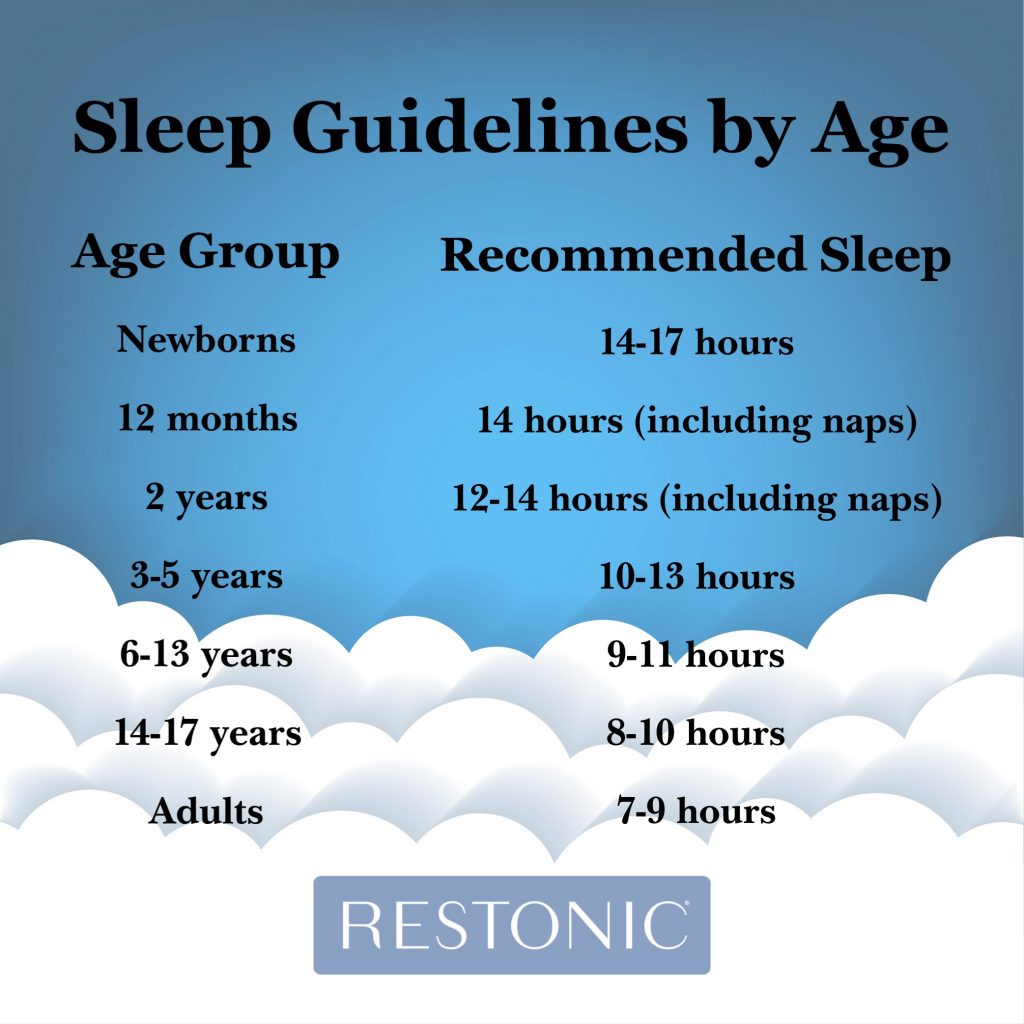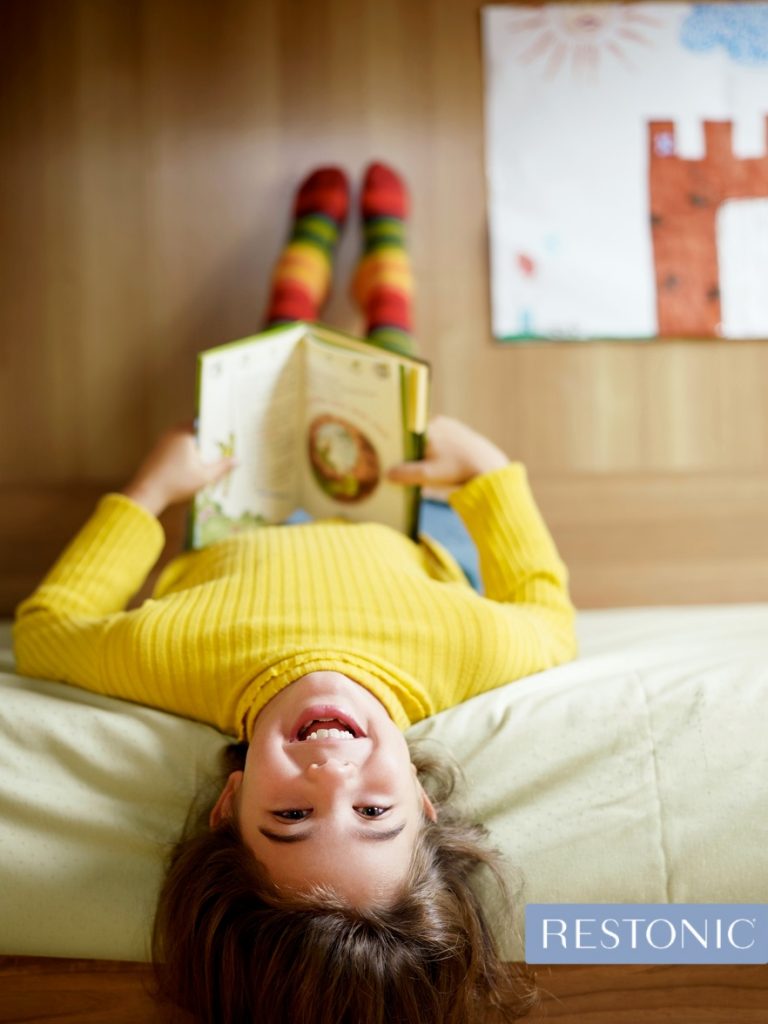 Experts agree that healthy sleep routines are critical to a child’s well-being, but how much is enough?
Experts agree that healthy sleep routines are critical to a child’s well-being, but how much is enough?
Every parent understands what happens to their child’s mood when little ones are short on sleep. You’ve witnessed it firsthand – the meltdowns, the nothing-can-make-me-happy-attitude and the obsession with the word “no.” No amount of juice boxes, animal crackers and hugs will soothe their tired souls.
Sleep addresses not just the emotional needs of children, but the physical ones, too, according to mounting scientific evidence. That research underscores the importance of determining just how much sleep is right for your child. Members of the American Academy of Sleep Medicine took on the task on behalf of families everywhere and their findings were noteworthy. To promote optimal health, this is what they came up with in terms of recommendations for sleep in a 24-hour period.
5 golden rules for establishing good sleep habits for kids
Parents can do a lot to shape sleep routines that their kids can follow throughout their lives. “It’s never too early to teach children about the importance of sleep,” says Terry Cralle, a registered nurse, certified clinical sleep educator and health and wellness spokesperson for the Better Sleep Council (BSC). “Good sleep habits will provide a lifetime of benefits.”
There are some basic, yet important, things a parent can do to set up their child for sleep success. Here are 5 golden rules for establishing good sleep habits for children, offered by BSC.
- Set a consistent bedtime. Routine and consistency are the keys. A regular bedtime strengthens circadian rhythms and helps ensure adequate time for sleep. “Kids will learn what to expect and bedtime will become a non-negotiable part of the day,” explains Cralle. “A regular bedtime also fosters healthy, independent sleep in children.” Begin those patterns early on. In one study, children without consistent bedtimes at age 3 had lower test scores in reading, math and spatial awareness at age 7 than children with regular bedtimes.
- Always put going to bed – and sleep in general – in a positive light. For example, parents should say: “You get to go to bed,” instead “You have to go to bed.” Reinforce to children that sleep is good for all of us. It helps them be a better student, better athlete, better sibling, better friend – and it helps prevent them from becoming ill.
- Choose non-electronic, pre-sleep activities to encourage sufficient sleep. It’s not recommended that a child’s bedroom have a TV. Electronics, especially in the bedroom, interfere with sleep, compromise sleep quality and encroach upon a child’s total sleep time. This is backed up with a study published in the medical journal Pediatrics. It said that screen time was associated with a later sleep onset.
- Keep it clean. Just like adults, children will sleep better in an environment will minimal clutter. Encourage youngsters to keep their bedrooms tidy. Make sure that’s a clear path to avoid any nighttime falls or mishaps.
- Invest in a high quality, supportive mattress for your child. Allow older children to participate in their sleep health by getting involved in their mattress selection process. Use a mattress protector to minimize these allergens and keep the mattress cleaner.
Common mistakes parents make around sleep and their kids
Parents may mean well, but sometimes they lead their kids astray when it comes to good sleep habits. Some aren’t aware of unique needs of children, while others might be passing along some of their not-so-good patterns to their offspring.
- Inconsistency. “Not having a consistent bedtime routine can interfere with children getting a restful night’s sleep,” says Cralle. “Institute a reliable and predictable set of steps, in the same order, leading up to bedtime.” This type of routine is a cue that it’s time to sleep and helps reduce stress around bedtime.
- No wind-down period. Kids should have at least 30 minutes prior to the start of the bedtime routine. Use it to do low-key, electronic-free activities, like doing puzzles, reading, coloring, etc.
- Too much bright light in the evenings. It interferes with getting a good night’s sleep. Dim lights in the evening and avoid excessively bright bathroom lighting while bathing, brushing teeth and otherwise preparing for bed. Also, evaluate your child’s room while it’s dark to find light sources, such as the tiny lights on electronics. Remove them or cover lights with tape, or turn away from your child’s line of sight.
- Avoid giving a child a used or hand-me-down mattress that might have bacteria, mold, and dust mites, causing potential health and sleep issues. Opt for a mattress that is new and unused.
Sleep Chart for Kids by Age Group
- Infants 4 – 12 months: 12 to 16 hours of sleep (including naps)
- Children 1 – 2 years: 11 to 14 hours (including naps)
- Children 3 – 5 years: 10 to 13 hours (including naps)
- Children 6 – 12 years: 9 to 12 hours
- Teens 13 – 18 years: 8 to 10 hours
Rest well & wake up ready to go!
Better sleep gives rise to better mornings, bringing your goals into focus and dreams within reach. Hungry for more sleep info? Dig into these posts:
Eager for more sleep info you can really use?
Join our community
Facebook
and let's continue the conversation.
We'd love to hear what you have to say!
This blog does not provide medical advice. It is intended for general informational purposes only and does not address individual circumstances. It is not a substitute for professional medical advice, diagnosis or treatment and should not be relied on to make decisions about your health. Never ignore professional medical advice in seeking treatment because of something you have read on Restonic.com. If you think you may have a medical emergency, immediately call your doctor or dial 911.

